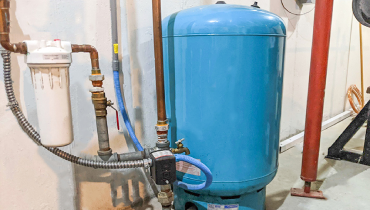Simple Techniques for Dealing with Low Water Pressure in Your Home
Simple Techniques for Dealing with Low Water Pressure in Your Home
Blog Article
The content following next relating to 10 Reasons for Low Water Pressure in Your House is extremely remarkable. Check it out for your own benefit and figure out what you think of it.

Low water pressure in your house can be a frustrating issue, influencing whatever from bathing to cleaning dishes. If you're experiencing weak water flow, there are numerous feasible causes and services to check out. In this guide, we'll review common factors for low water pressure and functional steps to address the concern properly.
Intro to Low Tide Stress
Low water pressure happens when the flow of water from your faucets, showers, and other components is weaker than normal. This can make day-to-day jobs more tough and much less efficient. Recognizing the root causes of low water pressure is crucial to locating the right service.
Usual Reasons For Low Tide Pressure
Faulty Stress Regulatory Authorities
Stress regulators are in charge of keeping regular water pressure in your home. If they malfunction, it can result in low water pressure or unequal circulation throughout your house.
Local Water Issues
In some cases, the problem exists outside your home. Local supply of water issues, such as main line leakages or upkeep job, can momentarily reduce water pressure in your location.
Pipe Obstructions
In time, pipelines can come to be blocked with mineral deposits, sediment, or debris, restricting the circulation of water. This is an usual problem in older homes with galvanized steel pipes.
Rust
Rust within pipes can bring about leaks and minimized water stress. Corrosion build-up can tighten water circulation, specifically in aging plumbing systems.
How to Diagnose Low Water Stress
Examining Pipelines
Check visible pipelines for signs of leaks, rust, or clogs. Take note of any type of uncommon audios, such as knocking or rattling pipelines, which can show concerns within the plumbing system.
Consulting with a Plumber
If you're not able to pinpoint the source of low water stress, think about working with a professional plumber to perform a thorough inspection. They can determine underlying concerns and suggest suitable options.
Checking Taps and Components
Begin by checking the water pressure at various faucets and fixtures throughout your home. If the concern is isolated to details locations, it might indicate localized issues.
DIY Solutions to Take Care Of Low Water Stress
Flushing Water Heater
Sediment build-up in the water heater can restrict circulation and decrease efficiency. Purging the container regularly assists eliminate sediment and maintain optimum efficiency.
Checking Stress Regulator
Make certain that the stress regulatory authority is functioning properly. Readjusting or changing the regulator can assist recover appropriate water pressure throughout your home.
Cleaning Up Aerators and Showerheads
Mineral deposits can gather in aerators and showerheads, lowering water flow. Eliminate and clean up these components routinely to improve water stress.
Clearing Clogs in Pipeline
For minor obstructions, try using a plumbing snake or chemical drain cleaner to clear obstructions in pipes. Be cautious when making use of chemicals and adhere to security standards.
When to Call a Specialist Plumber
If DIY initiatives fail to resolve the issue or if you think substantial plumbing issues, it's finest to seek aid from a qualified plumber. They have the experience and devices to deal with intricate problems safely and successfully.
Preventive Measures to Preserve Water Pressure
Mounting a Pressure Booster
Consider mounting a pressure booster pump to improve water pressure in areas with constantly low circulation. This can be particularly useful for multi-story homes or residential or commercial properties with high-demand fixtures.
Tracking Water Use
Bear in mind water usage habits and avoid ill-using the plumbing system. Straightforward modifications, such as shocking showers and laundry lots, can aid maintain appropriate water stress.
Regular Maintenance
Set up regular maintenance for your plumbing system to stop issues such as deterioration, leaks, and blockages. Addressing minor problems early can assist prevent even more considerable repairs in the future.
Conclusion
Dealing with low water stress can be aggravating, yet recognizing the underlying reasons and implementing appropriate solutions can bring back optimal circulation throughout your home. Whether it's cleaning up aerators, evaluating pipelines, or seeking advice from a plumber, taking aggressive steps can guarantee a steady supply of water for your day-to-day needs.
FOUR WAYS TO FIX LOW WATER PRESSURE NOW
Turning on a shower or faucet only to find the water comes out in a sad, slow drizzle is never a good feeling. How exactly are you supposed to wash a pan or take a quick shower when it takes 10 minutes just to rinse off a little soap? The good news is that when your water pressure is bad, there's always a cause: typically one that can be easily fixed. Here are some of the most common causes of low pressure and what you can do to fix the issue:
DEBRIS AND MINERAL DEPOSIT BUILDUPS
If you notice low water pressure from just one or two of the fixtures in your house, the problem likely has to do with debris buildup. Water is full of minerals and other debris, all of which can accumulate in your pipes and on your fixtures. This can cause a blockage that affects how much water flows through. To fix this, try filling a small plastic bag with white vinegar, and use a rubber band to hang it around your showerhead or faucet. Let the head of the fixture soak for a few hours, and the vinegar should loosen the deposits.
WATER LEAKS
Leaks are another common cause of low water pressure. If water is flowing out of your plumbing through a hole or crack before it can reach your fixture, the pressure coming out of the faucet or showerhead will be lower. A plumbing professional is your best bet for finding and repairing a leak in your water supply pipes.
Leaks are another common cause of low water pressure. If water is flowing out of your plumbing through a hole or crack before it can reach your fixture, the pressure coming out of the faucet or showerhead will be lower. A plumbing professional is your best bet for finding and repairing a leak in your water supply pipes.
A VALVE ISSUE
If you have low water pressure throughout your home, check your main shut-off valve to make sure it's completely open. You may also want to see if there's a pressure-reducing valve installed. If there is, have a plumber help you adjust the settings to get the pressure you're looking for.
OTHERS USING WATER
Believe it or not, your low water pressure could be caused by your neighbors. If you notice low pressure at certain times of day, it may be because you and the people living next to you have similar schedules - when everyone is showering at the same time, the pressure will be lower in every home. Low pressure throughout the neighborhood may also be caused by an issue with your municipal water supply. If that's the case, call the supplier to see if they're working on the issue.
https://www.rotorooter.com/blog/water-leaking/low-water-pressure-fixes/

I came across that blog post about Low Water Pressure in the House? while surfing the search engines. Liked our content? Please quickly share it. Let other people check it out. I love your readership.
Click Here Report this page